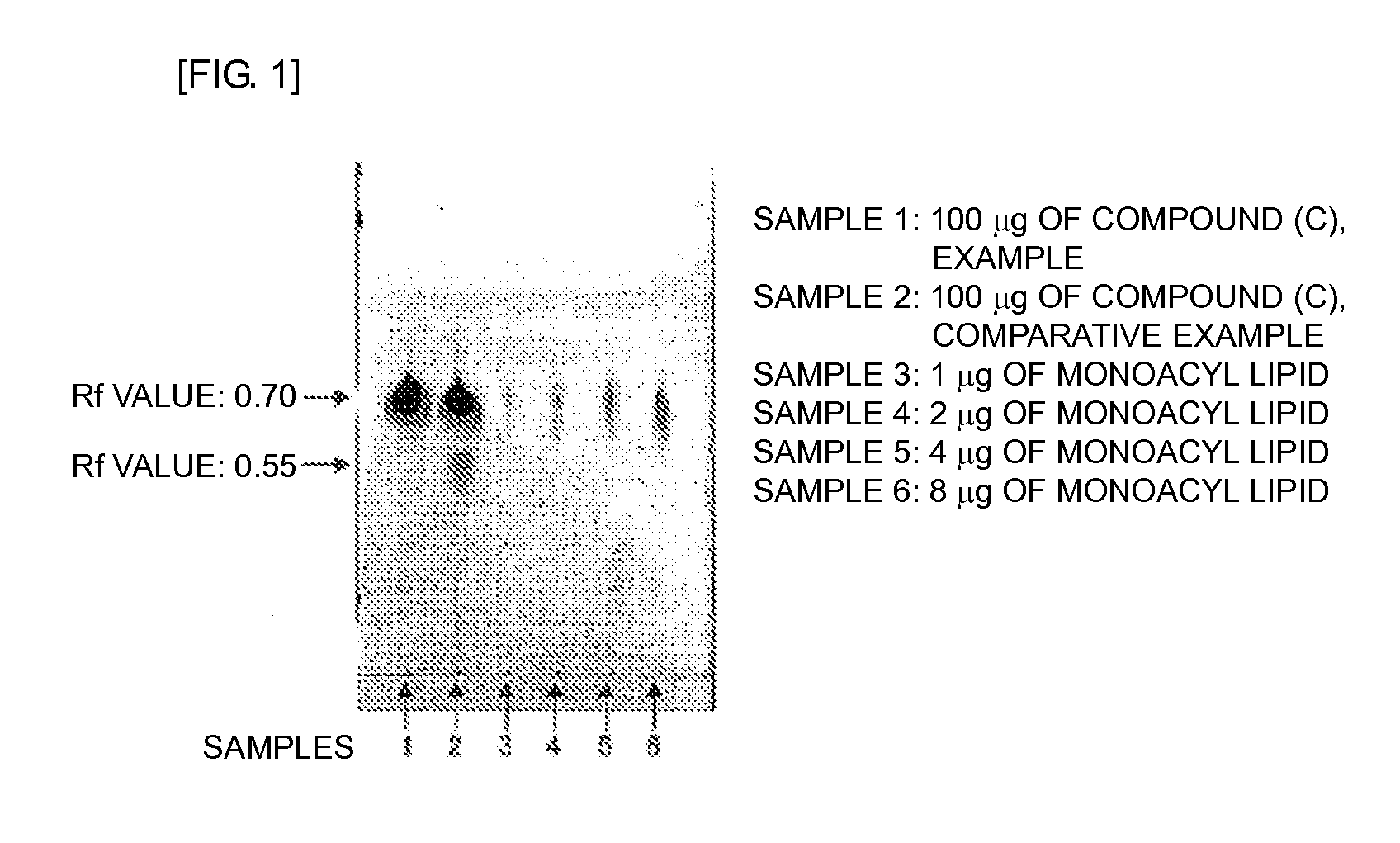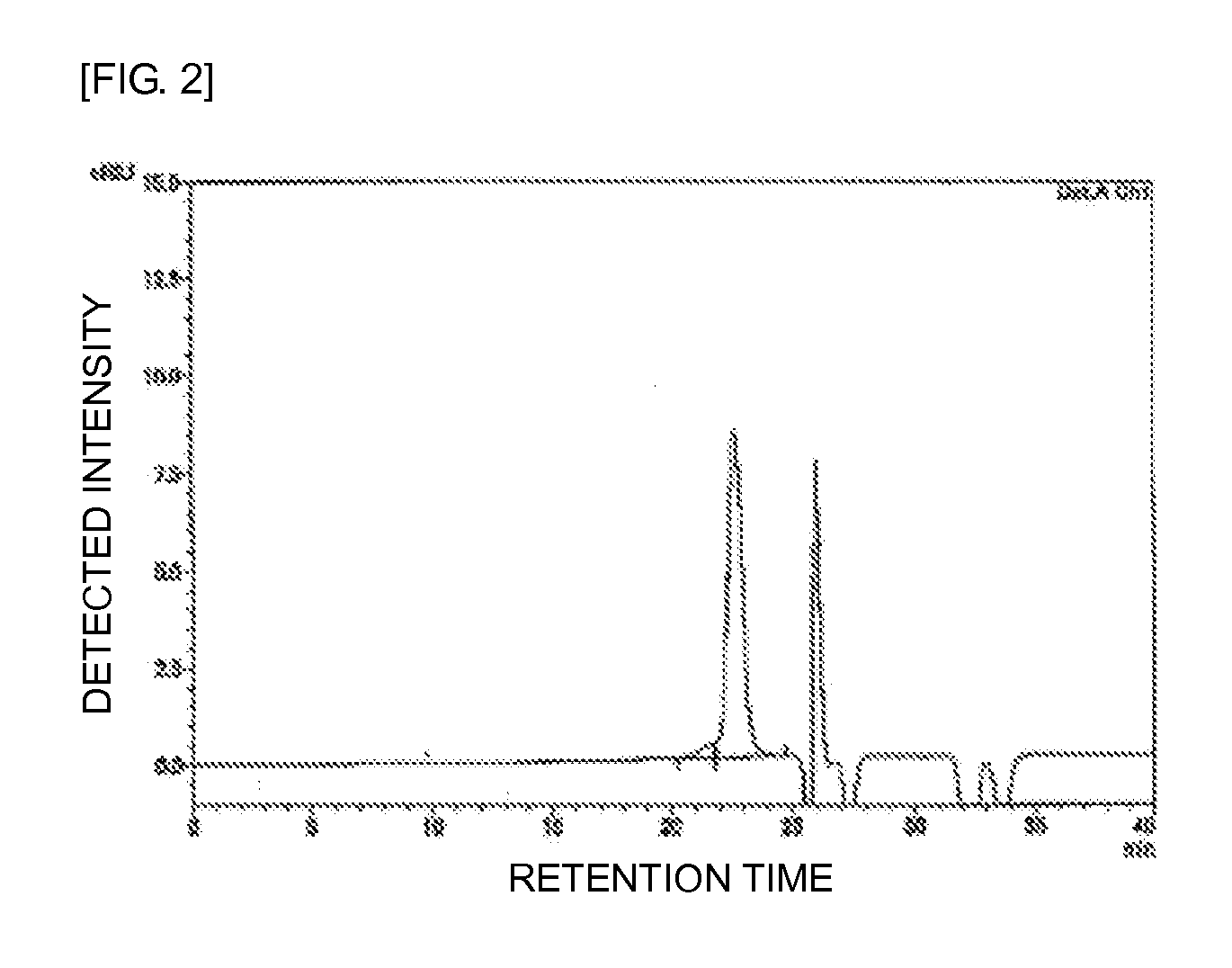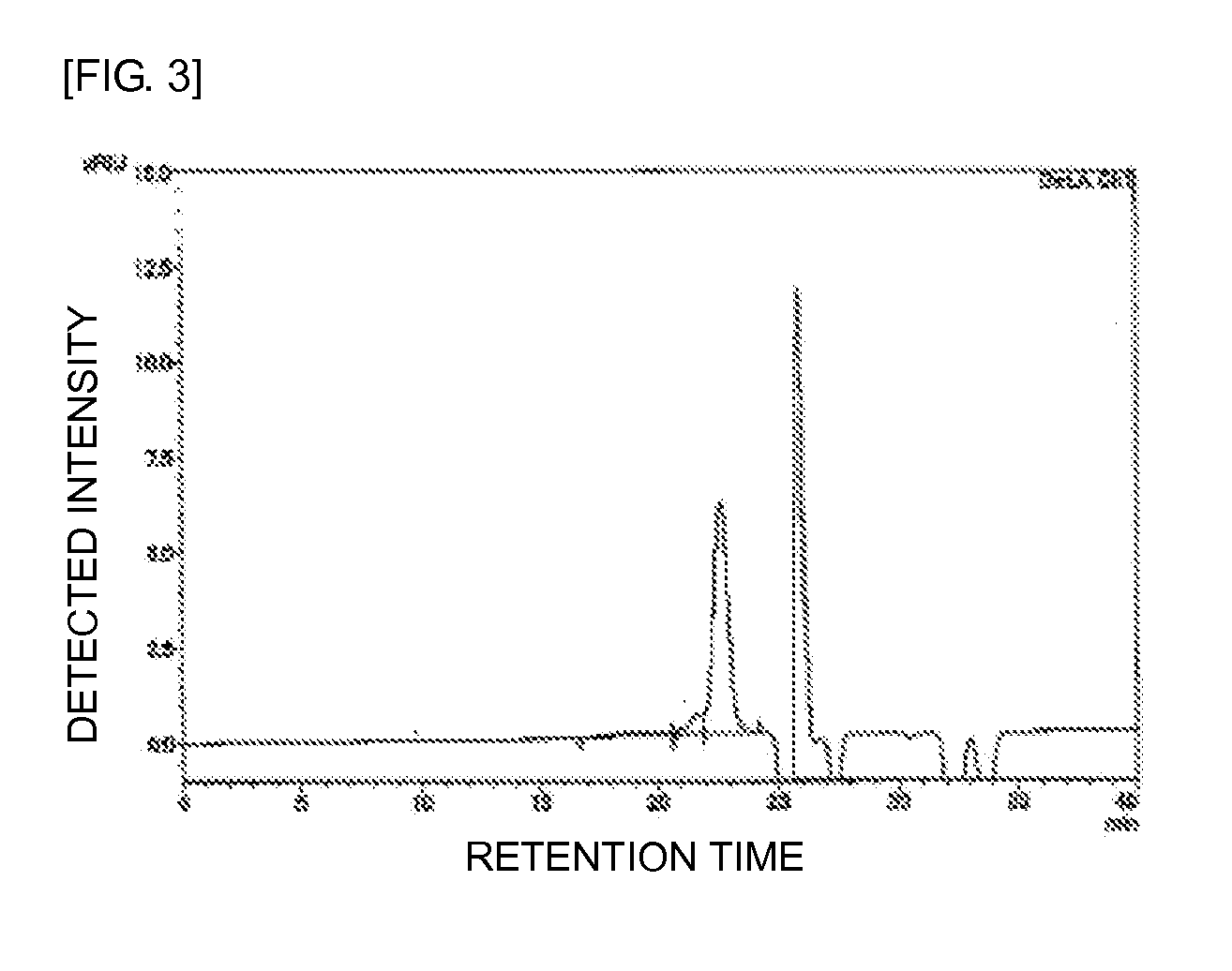Polyoxyalkylene-modified lipid and method for producing the same
- Summary
- Abstract
- Description
- Claims
- Application Information
AI Technical Summary
Benefits of technology
Problems solved by technology
Method used
Image
Examples
example 1
[0065]Example 1-1: a step of maleimidizing a polyethylene glycol compound
Example 1-2: a step of deprotecting a polyethylene glycol maleimide compound
Example 1-3: a reaction step of coupling a polyethylene glycol maleimide compound to a lipid compound
The synthesis of a compound, represented by Formula (1), obtained through the steps of Examples 1-1, 1-2, 1-3 in that order
(R1CO and R2CO=acyl groups derived from stearic acid, R3=a trimethylene group, OA=oxyethylene groups, n=45, Z=(CH2)j-L-(CH2)k—W; j=0, L=an amide bond, k=2, W=a maleimide group)
example 1-1
A Step of Maleimidizing a Polyethylene Glycol Compound
[0066]Into a 100-mL round-bottomed flask equipped with a thermometer, a nitrogen-blowing tube, an agitator, and a cooling tube, 34 g of acetonitrile, 6.8 g (3.4 mmol) of a polyethylene glycol ethylamine compound protected with t-butyl carbamate, and 1.1 g (4.1 mmol) of succinimidyl maleimide propionate were put, followed by agitation with nitrogen blown into the flask and reaction at 25° C. for 2 hours. After reaction was terminated, a reaction solution was transferred to a 200-mL eggplant flask, acetonitrile was distilled off at 50° C. using an evaporator, and a remaining concentrate was dissolved in 48 g of ethyl acetate. Thereafter, the ethyl acetate solution was cooled to 10° C. and 27 g of hexane was added to the ethyl acetate solution, followed by crystallization. Precipitated crystals were vacuum-filtered. After 48 g of ethyl acetate was added to obtained crystals and the crystals were heated and were dissolved therein at ...
example 1-2
A Step of Deprotecting a Polyethylene Glycol Maleimide Compound
[0070]Into a 100-mL round-bottomed flask equipped with a thermometer, a nitrogen-blowing tube, an agitator, and a cooling tube, 45 g of dichloromethane, 5.7 g (2.5 mmol) of the polyethylene glycol maleimide compound (A) protected with t-butyl carbamate, and 2.4 g (25 mmol) of methanesulfonic acid were put, followed by agitation with nitrogen blown into the flask and reaction at 25° C. for 3 hours. After reaction was terminated, a reaction solution was transferred to a 200-mL eggplant flask, dichloromethane was distilled off at 50° C. using an evaporator, and a remaining concentrate was dissolved in 50 g of ethyl acetate. After 2.9 g of an acid adsorbent, KW1000, was added to the solution and the solution was agitated at room temperature for 1 hour, impurities and the adsorbent were removed by filtration. Thereafter, the filtrate was cooled to 10° C. and 50 g of hexane was added to the filtrate, followed by crystallizatio...
PUM
 Login to View More
Login to View More Abstract
Description
Claims
Application Information
 Login to View More
Login to View More - R&D
- Intellectual Property
- Life Sciences
- Materials
- Tech Scout
- Unparalleled Data Quality
- Higher Quality Content
- 60% Fewer Hallucinations
Browse by: Latest US Patents, China's latest patents, Technical Efficacy Thesaurus, Application Domain, Technology Topic, Popular Technical Reports.
© 2025 PatSnap. All rights reserved.Legal|Privacy policy|Modern Slavery Act Transparency Statement|Sitemap|About US| Contact US: help@patsnap.com



